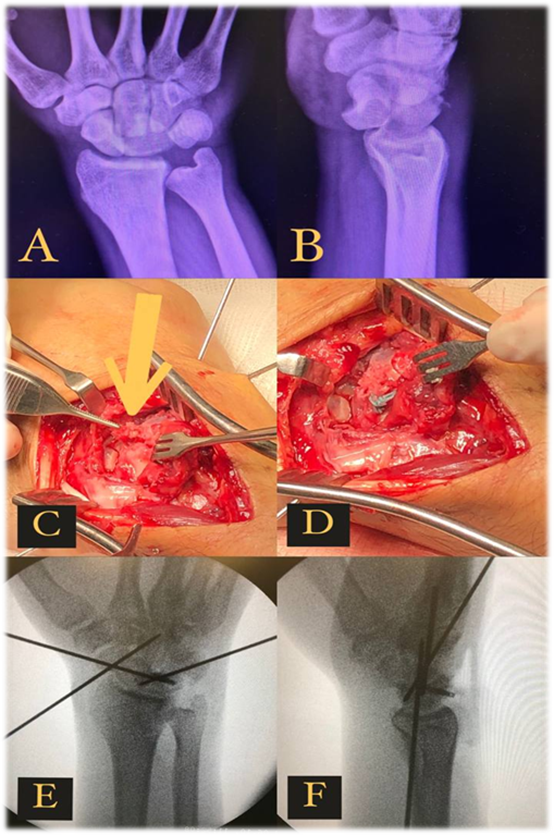Perilunate Carpal Dislocation: A Case Report
Main Article Content
Abstract
Perilunate dislocations of the wrist occur due to instability in the ligaments that stabilize the carpal bones relative to each other. Despite their low incidence, these injuries are highly severe. The aim of this study is to report a case in which it is possible to demonstrate the trauma mechanism, clinical presentation, diagnosis, treatment, and follow-up. The patient is a male with a history of trauma from a fall, diagnosed with perilunate dislocation of the wrist through physical examination and imaging, requiring surgical treatment to restore carpal anatomy. It is concluded that accurate identification and diagnosis of the injury, as well as selection of the appropriate treatment, are essential for preserving limb function and preventing future complications, such as carpal instability, local fibrosis, carpal osteoarthritis, and avascular necrosis.
Article Details

This work is licensed under a Creative Commons Attribution 4.0 International License.
Authors retain the copyright of their articles and grant the journal the right of first publication under the Creative Commons Attribution (CC BY) license, which allows others to share and adapt the work with proper attribution.
References
Walsh JJ, Berger RA, Cooney WP. Current status of scapholunate interosseous ligament injuries. J Am Acad Orthop Surg. 2002;10(1):32–42.
Subramanian K. Perilunate dislocation – case report and review of literature. J Clin Diagn Res. 2017;11(8):06–08.
Tanure AA, et al. Índice de falha diagnóstica na detecção de fraturas e luxações perilunares do carpo utilizando radiografias simples de punho. Rev Bras Ortop. 2020;56(3):340–345.
Severo AL, Lemos MB, Pereira AP, et al. Trans-scaphoid perilunate fracture dislocation beyond Mayfield stage IV: a case report on a new classification proposal. Rev Bras Ortop (Engl Ed). 2018;53(5):643–646.
Ribak S, De Rezende MR, et al. Atualização em cirurgia da mão traumatologia. 1st ed. Di Livros; 2021.
Rhind JH, Gulihar A, Smith A. Trans-triquetral perilunate fracture dislocation. Trauma Case Rep. 2018;14:27–30.
Obert L, Loisel F, Jardin E, et al. High-energy injuries of the wrist. Orthop Traumatol Surg Res. 2016;102(1):81–93.
Pardini A, Freitas A. Traumatismos da mão. 4th ed. Medbook; 2008.
Etli I, Kozaci N, Avci M, et al. Comparison of the diagnostic accuracy of X-ray and computed tomography in patients with wrist injury. Injury. 2020;51(3):651–655.
Kara A, Celik H, Seker A, et al. Surgical treatment of dorsal perilunate fracture-dislocations and prognostic factors. Int J Surg. 2015;24:57–63.
Pinho AB, Sobania RL. Perilunate carpal dislocation. Clinical evaluation of patients operated with reduction and percutaneous fixation without capsular-ligament repair. Rev Bras Ortop (Engl Ed). 2017;52(4):402–409.
